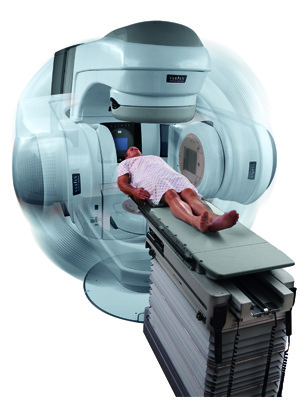
While two advanced radiosurgery approaches— Gamma Knife (Elekta) and RapidArc (Varian)— offer different strengths, they are equally effective at eradicating cancer in the brain, say researchers at Sidney Kimmel Cancer Center, Thomas Jefferson University, Philadelphia, USA.
A study, published online in Frontiers in Oncology, compared the two different devices in brain radiosurgery. Six patients, each with three or four brain metastases, were studied.
The Gamma Knife was slightly more effective than RapidArc at focusing the beam of radiation whilst RapidArc offered much quicker treatment compared to the Gamma Knife, researchers say. Gamma Knife treatment usually take 60-100 minutes; about three-to-five times longer than RapidArc, they say.
“In the end, using one or the other doesn’t make a significant clinical difference and that is important to know because physicians and patients now know they have a choice of treatments,” says the study’s senior author, associate professor Wenyin Shi, co-director of the Jefferson Brain Tumor Program.
Thomas Jefferson University was one of the first institutions in the country to treat patients with RapidArc technology, according to a company release. Its physicians have been using Gamma Knife technology for 21 years.
“As drug therapy for cancer becomes better at controlling systemic cancer, disease in the brain increases over time. The brain is a sanctuary for cancer—chemotherapies and targeted agents can’t reach the brain and the central nervous system because of the blood-brain barrier,” says Adam Dicker, co-author and chair and professor of Radiation Oncology, Pharmacology and Experimental Therapeutics at Sidney Kimmel Medical College. “The results are that a number of different cancers are now showing up in the brain.”
The Gamma Knife, invented in Sweden, features a circular array of 201 beams of gamma radiation that meet at a single point. The downside of the treatment, which is very accurate, is that patients wear a helmet that is fixed to the skull, Shi says. The procedure can also take a long time, he says.
RapidArc radiation is a photon-emitting linear accelerator. Very small beams with varying intensities are aimed at a tumour and then rotated around the patient. This should result in attacking the target in a complete three-dimensional manner. A single treatment can take as little as 10-15 minutes, according to Varion.













